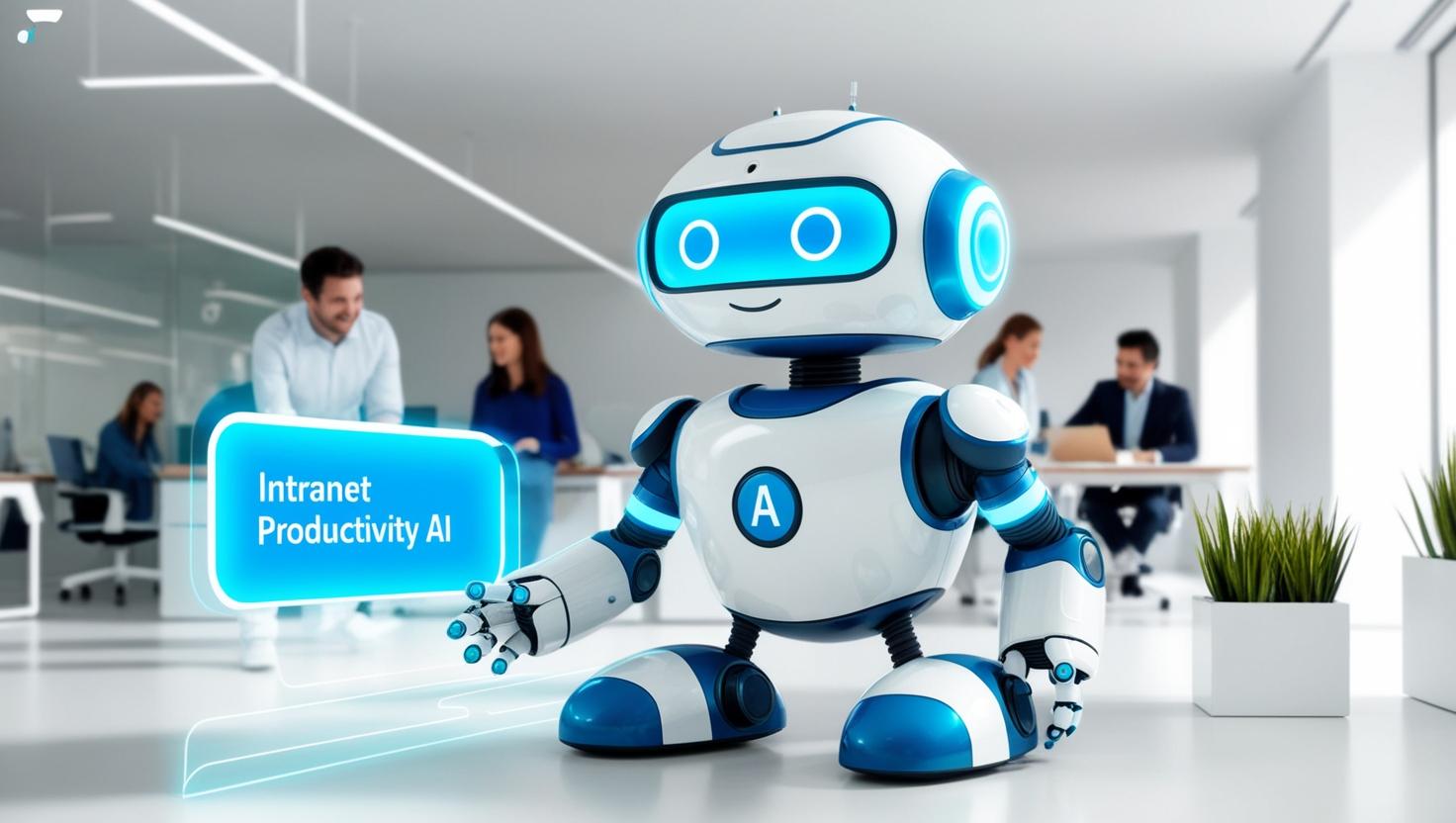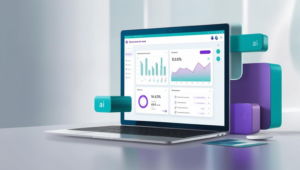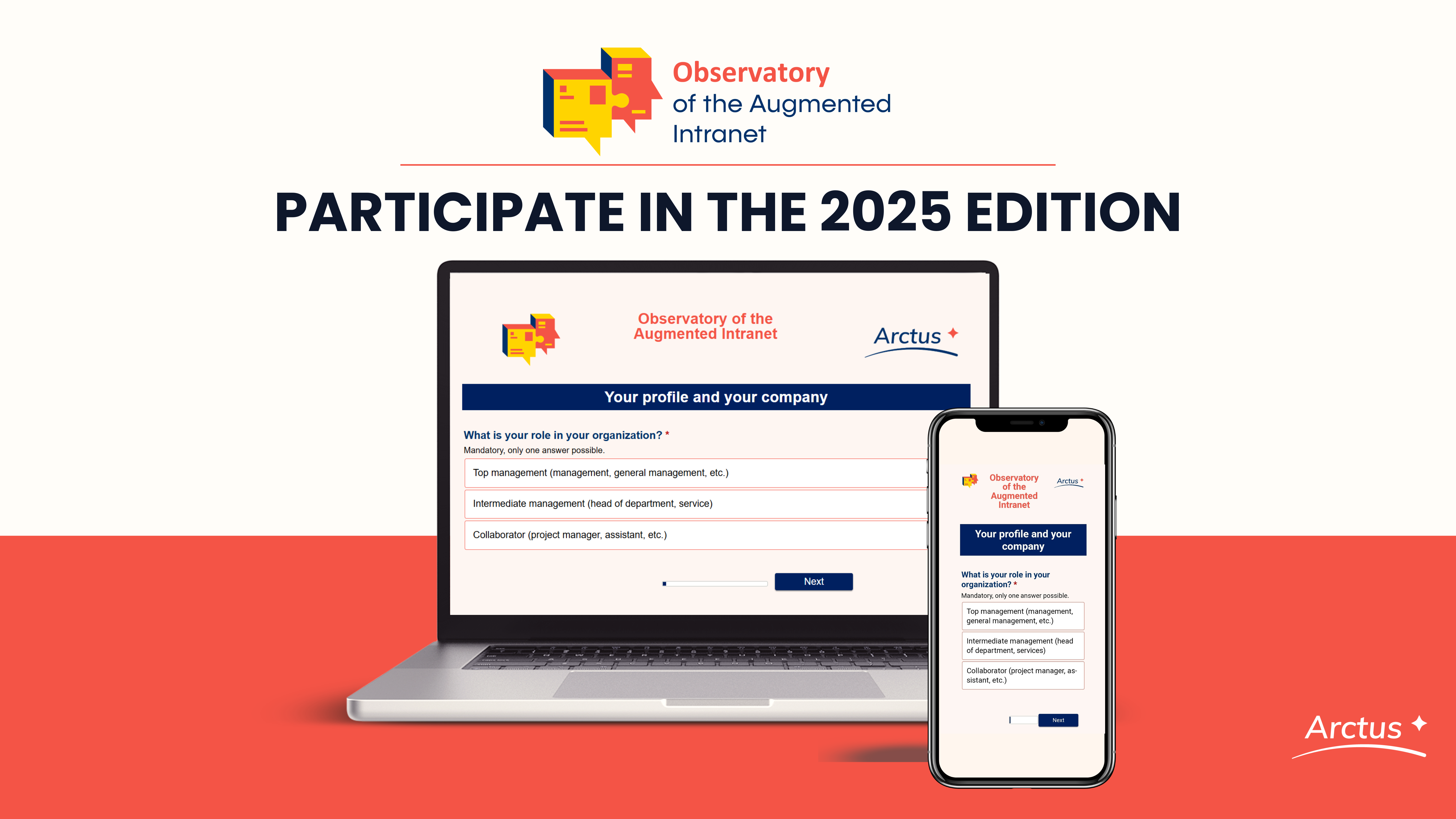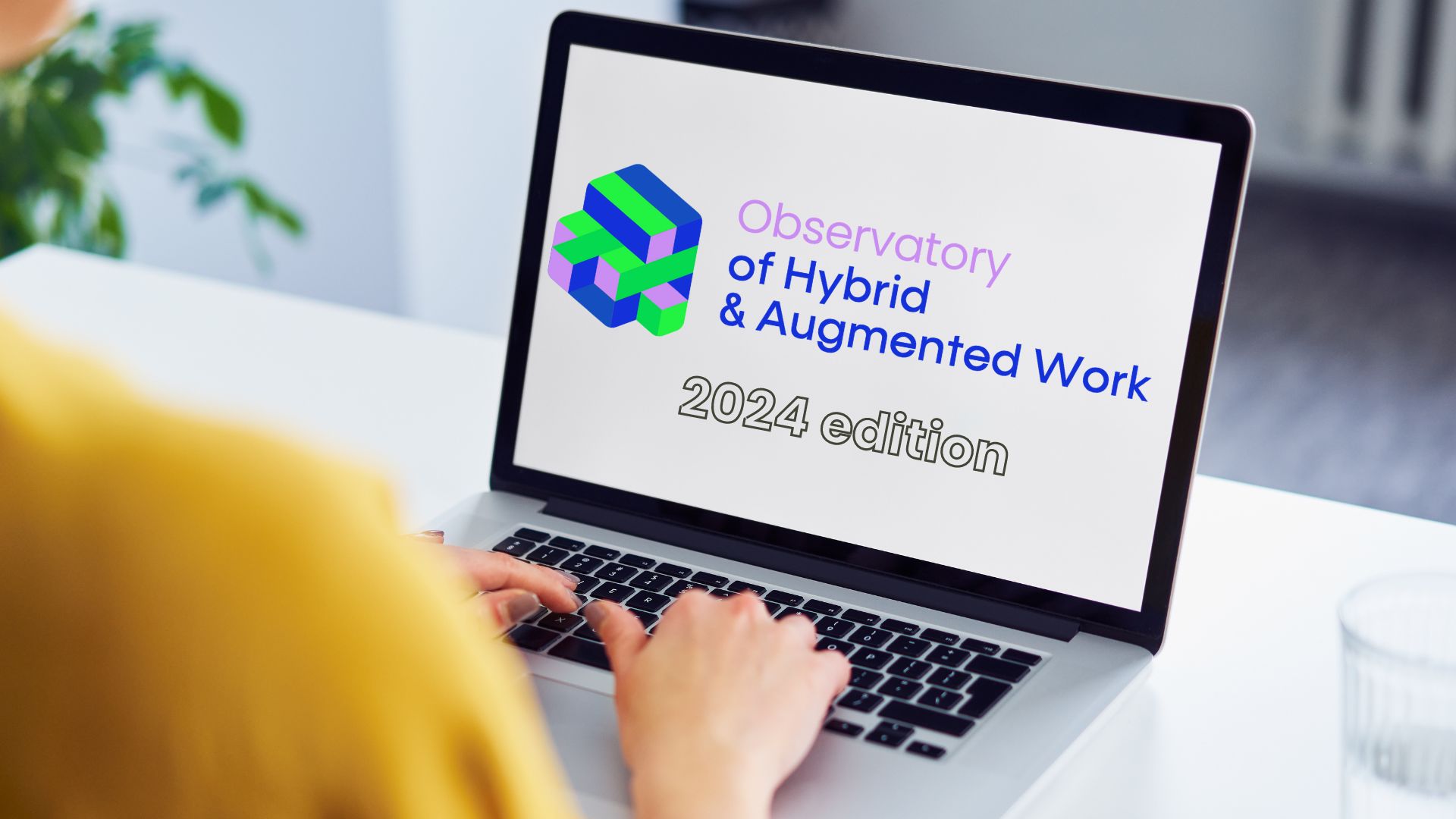HOW TO INTEGRATE GENERATIVE AI INTO YOUR INTRANET AND BOOST INTERNAL PRODUCTIVITY?

31 March 2025

Generative AI is gradually transforming corporate intranets into increasingly intelligent and collaborative tools. After the wave of announcements from major generative AI players (OpenAI, Anthropic, Claude, Perplexity...), CMS providers are now integrating these technologies to optimize information search, content generation, and the automation of internal tasks.
How can generative AI be integrated into an intranet? What types of services based on generative AI are offered? What is the level of adoption of these features by companies? How will the service offering and associated uses evolve?
These are questions for which it is interesting to provide some answers. As we will see, the use cases are still being rolled out very gradually.
Keys to understanding the generative AI offering in CMS platforms
Generative AI solutions are increasingly being offered within the features of modern CMS platforms. According to the 2025 edition of the Clearbox report, a British consulting firm specializing in the screening of CMS solutions, these generative AI services can be classified according to four criteria:
- The level of assistance: to improve information retrieval through intelligent search engines, suggest content in a personalized way, and automate repetitive tasks such as document tagging
- Relevance: to save time, improve information accessibility, and optimize collaboration
- Usability: to facilitate the use of interfaces and ensure smooth integration with existing tools and minimal learning for end users
- Governability: how the features are "governable" and allow, among other things, traceability of AI actions, compliance with internal governance rules, algorithm transparency, and the ability to configure or restrict certain features
💡Key data on the generative AI service offering in intranets
The analysis of several dozen solutions reveals that:
- 2 out of 3 providers offer text generation services
- 1 out of 2 providers offers content search assistance and user experience personalization support features
Since 2024, the generative AI-based service offering has expanded, but as early as 2023, according to the Intranet Observatory:
- 65% of companies use generative AI for content creation, rewording, summarization, and translation
- 61% use it for search
- 43% to boost creative work
While today's priorities remain the same, some of these generative AI services are now available in CMS platforms. Thus, the availability or absence of generative AI services provided by CMS platforms can be a deciding factor among others when choosing a solution. In this context, strategic preparation is essential.
8 key criteria for preparing the implementation of generative AI in an intranet
In the face of numerous challenges, we have identified 8 areas to consider to ensure successful use of generative AI:
- Define a strategic vision
Before deploying generative AI on your intranet, it is important to establish a clear roadmap. AI should, for example, facilitate access to internal knowledge and automate time-consuming tasks (document summarization, answers to frequently asked questions, etc.). It is essential that this vision be shared with employees to ensure strategic alignment and avoid fragmented or poorly managed adoption. - Deploy tools that deliver real efficiency
Choose services based on the specific needs of your company. Should the focus be on content production, search, or other areas? - Have a clearly defined budget
The deployment of generative AI-based services requires, on one hand, a specific budget and, on the other, training for users and contributors to ensure real adoption of the tool within the intranet. - Adresser le sujet de la sécurité
Déployer une IA capable de détecter et de bloquer automatiquement l’insertion de données sensibles (ex. : numéros de sécurité sociale, informations confidentielles) dans les prompts soumis aux outils de génération de contenu.
- Include legal considerations
Draft a usage policy stating that AI-generated content must be validated by a human before publication, to prevent risks related to intellectual property or the dissemination of incorrect information. The policy should also reiterate rules related to copyright and infringement, including for internal content. - Integrate green IT
Optimize the use of AI models by limiting content generation to the actual demand of employees, rather than running massive queries that unnecessarily consume resources. - Lead change management
Organize awareness sessions and practical workshops to show contributors how AI can support them in their daily tasks, and to dispel concerns about the replacement of their skills. - Establish proper governance
Enhance intranet governance by setting up an AI committee composed of IT experts, business representatives, and HR managers to monitor the evolution of use cases, assess risks, and adjust usage policies based on feedback.
💡Best practice:
All CMS providers today offer more or less advanced features that cover all or part of the listed services. It is essential to adopt a thoughtful and proven approach upstream through POCs (Proof Of Concept) to make the right choices and integrate AI coherently, both at the beginning and throughout the intranet project.
Use cases of generative AI supporting the intranet project
Beyond the generative AI features provided in CMS platforms, a number of use cases have already been deployed as part of intranet projects:
- AI supporting content migration: to handle a large volume of documents as part of a recovery plan, we deployed a solution that enables automatic tagging and assigns a relevance score to the content. Through filtering based on these criteria, it becomes possible to quickly select the essential content to retain during large-scale recovery plans.
- KPI analysis: the generation of indicators is often underused due to ineffective utilization. AI makes it possible to automate KPI analysis and automatically highlight unusual trends.
- Internal matchmaking: soon to be deployed, a matching tool designed to connect professionals based on multiple criteria, including those derived from unstructured data.
The applications are numerous, even limitless. The challenge lies in identifying the needs and defining how to effectively leverage existing tools. We will reach an advanced use of generative AI when we are able to invent new practices.
2030: 7 major trends of Generative AI in intranets
The 2030 intranet could be characterized through 7 major themes with the use of AI tools across all areas:
- Hyper-personalization for optimal accessibility
- An intranet driven by AI and machine learning for dynamic personalization of content and notifications based on each employee's profile and needs
- An adaptive and proactive navigation, suggesting resources, contacts, and tools based on the work context (factory, office, field, mobility)
- A seamless experience across desktop, mobile, and voice interfaces, adapted to work environments (production employees, mobile technicians, and office staff)
- An intelligent and proactive virtual assistant
- A advanced chatbot integrated to answer questions about procedures, technical documentation, HR, training, etc.
- A natural language interface to quickly find information and answers to questions, as well as perform common tasks (incident reporting, room booking, leave request, etc.).
- An intelligent and proactive virtual assistant
- A platform integrated with the digital work environment.
- A unification of Microsoft 365, Google Workspace, or specific business solutions within a single interface.
- Centralized access to documents, applications, and dashboards, with single sign-on (SSO) and enhanced identity management.
- Automated workflows for managing repetitive and administrative tasks (document validation, onboarding, incident tracking).

- Augmented collaboration and immersive communication.
- Intelligent collaborative spaces for working synchronously or asynchronously, regardless of time zone.
- The use of augmented and virtual reality for training, maintenance, and remote support.
- Real-time automatic translation for seamless communication between international teams.
- Optimized governance and knowledge management.
- An intelligent knowledge hub to capitalize on internal expertise, with content recommendations tailored to specific roles.
- Optimized validation workflows to ensure the reliability and accuracy of information.
- Analytical dashboardsto track engagement and content effectiveness.
- Improved employee engagement.
- A platform promoting two-way communication with feedback tools, co-creation features, and real-time surveys.
- A social approach to encourage participation and contribution (gamification, peer recognition).
- A strong integration of CSR and workplace well-being with dedicated spaces for internal initiatives and features to measure social and environmental impact.
- Enhanced cybersecurity and data sovereignty
- Une protection avancée des données avec des systèmes de cybersécurité adaptative et une gestion fine des droits d’accès
- Une conformité stricte avec les réglementations locales et internationales (RGPD, ISO 27001, etc.)
- Une architecture cloud hybride garantissant performance, résilience et flexibilité
Conclusion : l’IA générative, un levier stratégique pour l’intranet
L’intranet de 2030 ne sera plus un simple site web d’entreprise, mais une plateforme intelligente, intégrée et conversationnelle, agissant comme un assistant numérique de confiance pour chaque collaborateur. Il garantira fluidité, accessibilité et pertinence des informations dans un environnement de travail de toujours plus digitalisé et globalisé.
A plus court terme, nous publierons en mai les résultats de l’Observatoire de l’intranet augmenté. Ce sera l’occasion d’apporter de nouvelles données sur l’usage de l’IA Générative dans l’intranet en 2025. Le sujet n’a pas fini d’augmenter les intranets !
Si votre entreprise envisage d’adopter l’IA générative dans son intranet,
contactez-nous pour en discuter !

Founder of Arctus, Partner
Fondatrice et dirigeante d’Arctus, Isabelle est aussi auteur et conférencière. Depuis 2007, elle partage son regard et apporte des éclairages sur les transformations internes que traversent les organisations au travers d'études et observatoires tels que l'Observatoire du Travail hybride et management digital, l'Observatoire Intranet & Digital Working ou l'Observatoire de la Créativité. Elle est également administratrice et membre actif de l'AFCI, l'Association Française des professionnels de la Communication Interne.


